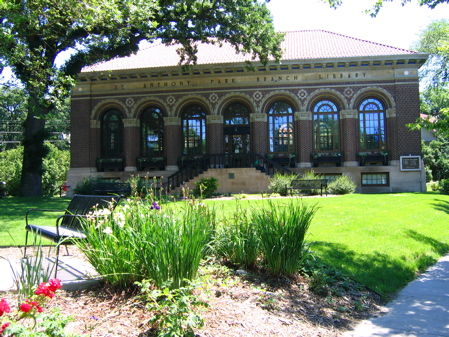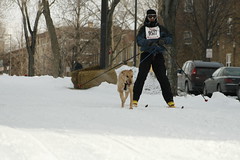 Thanks to Anne for pointing out Design*Sponge's great city guide to the the Twin Cities. Check it out here.
Thanks to Anne for pointing out Design*Sponge's great city guide to the the Twin Cities. Check it out here.Image: http://www.rateitall.com/itemimages/8383.jpg
This blog is dedicated to the great urban neighborhoods of Minneapolis and St. Paul. It's a compilation of inspirations, cool stuff, and random sitings that make city living such a great experience.
 Thanks to Anne for pointing out Design*Sponge's great city guide to the the Twin Cities. Check it out here.
Thanks to Anne for pointing out Design*Sponge's great city guide to the the Twin Cities. Check it out here. Does the idea of a freight train all decked out in Christmas lights and packed with holiday performers and Santa Claus get you--or perhaps younger members of your household --excited? Well you should plan on checking out the Canadian Pacific Holiday Train. The train travels across Canada and the U.S. collecting food for the hungry and spreading holiday cheer. This year it will be stopping in the Twin Cities on Tuesday, December 11th. Specific locations and times below:
Does the idea of a freight train all decked out in Christmas lights and packed with holiday performers and Santa Claus get you--or perhaps younger members of your household --excited? Well you should plan on checking out the Canadian Pacific Holiday Train. The train travels across Canada and the U.S. collecting food for the hungry and spreading holiday cheer. This year it will be stopping in the Twin Cities on Tuesday, December 11th. Specific locations and times below:

 Thanks to the Rake's 10,000 Arts magazine, I've become acquainted with Gladys Beltran's artwork. She paints these wonderful cityscapes of Minneapolis and St. Paul. With their skewed perspective, they've got an almost childlike quality to them--but when you look at the composition as a whole, with its details and orientation, it's clear that this is the work of a talented artist.
Thanks to the Rake's 10,000 Arts magazine, I've become acquainted with Gladys Beltran's artwork. She paints these wonderful cityscapes of Minneapolis and St. Paul. With their skewed perspective, they've got an almost childlike quality to them--but when you look at the composition as a whole, with its details and orientation, it's clear that this is the work of a talented artist.

 All images: Gladys Beltran, view them at mnartists.org
All images: Gladys Beltran, view them at mnartists.org
 Last night a friend and I had dinner at the newly opened, LEED-certified Red Stag Supper Club. After we were finished eating, I made him drive me around this "close-in" part of Northeast Minneapolis, [across the river from downtown and sandwiched between 1st and Central Avenues(map)] because it seemed so foreign to me. Back in 1995, I briefly lived with some friends in "the stucco palace"--a rental home on 8th Street SE, just a block off of Hennepin. With the exception of Whitey's and the Aveda Institute and Nyes further down on Hennepin, there was nothing going on in this neighborhood. Amazing what a decade-plus will do to a place! In addition to the old standbys, there's a whole new (well at least new to me) cast of restaurants, shops, condos, and adaptively reused office space.
Last night a friend and I had dinner at the newly opened, LEED-certified Red Stag Supper Club. After we were finished eating, I made him drive me around this "close-in" part of Northeast Minneapolis, [across the river from downtown and sandwiched between 1st and Central Avenues(map)] because it seemed so foreign to me. Back in 1995, I briefly lived with some friends in "the stucco palace"--a rental home on 8th Street SE, just a block off of Hennepin. With the exception of Whitey's and the Aveda Institute and Nyes further down on Hennepin, there was nothing going on in this neighborhood. Amazing what a decade-plus will do to a place! In addition to the old standbys, there's a whole new (well at least new to me) cast of restaurants, shops, condos, and adaptively reused office space. If H.G. Wells were here in the Twin Cities today, he would be full of hope. Much has been made of the recent Census Bureau stats that ranked Minneapolis second in the nation for bicycle commuting--beat only by the perennial favorite, Portland, OR. [Check out this recent New York Times article that shows how Portland's penchant for pedalling isn't just good for the environment and health, it's good for the economy too.)
If H.G. Wells were here in the Twin Cities today, he would be full of hope. Much has been made of the recent Census Bureau stats that ranked Minneapolis second in the nation for bicycle commuting--beat only by the perennial favorite, Portland, OR. [Check out this recent New York Times article that shows how Portland's penchant for pedalling isn't just good for the environment and health, it's good for the economy too.)








 Here in St. Paul, a collection of 5 indy businesses that sell vintage "retro" furniture, clothing, and household goods have banded together to market their wares. I think this is genius. They aren't bound by a single neighborhood, but they've recognized that there is power in being part of group that shares a similar customer base. In an era of national chain domination, it is great to see new models of independent business promotion. Check out St. Paul's Retro Loop.
Here in St. Paul, a collection of 5 indy businesses that sell vintage "retro" furniture, clothing, and household goods have banded together to market their wares. I think this is genius. They aren't bound by a single neighborhood, but they've recognized that there is power in being part of group that shares a similar customer base. In an era of national chain domination, it is great to see new models of independent business promotion. Check out St. Paul's Retro Loop.


 I like to think of University Avenue as the Twin Cities own "El Camino Real." Rather than linking missions, presidios, and peublos, it connects Hmong and Somali neighbors; African-Americans and old school St. Paul Irish; the State Capitol and the Turf Club; the U of M and the Love Doctor.
I like to think of University Avenue as the Twin Cities own "El Camino Real." Rather than linking missions, presidios, and peublos, it connects Hmong and Somali neighbors; African-Americans and old school St. Paul Irish; the State Capitol and the Turf Club; the U of M and the Love Doctor. 
 According to Microtrends, the new book by Democratic pollster Mark Penn--and as reported by Matt Bai in the 11/4/07 edition of the New York Times Sunday Magazine, 4.2 million Americans work exclusively from home and around 20 million do it part time. For the first time in my life I am working from home--as a part-time, freelance consultant and a full-time mom (with 12 hours of babysitting per week.) It is liberating and freakishly productive. The flexible schedule gives me the freedom to check out neighborhood haunts mid-day, during the week--no crowds, no rush. Before, on the days that I had an appointment out of the office, I used to wonder who all of those people were sitting in a cafe at 2PM on Wednesday. With 4.2 million folks working from home, I'm starting to get a better picture.
According to Microtrends, the new book by Democratic pollster Mark Penn--and as reported by Matt Bai in the 11/4/07 edition of the New York Times Sunday Magazine, 4.2 million Americans work exclusively from home and around 20 million do it part time. For the first time in my life I am working from home--as a part-time, freelance consultant and a full-time mom (with 12 hours of babysitting per week.) It is liberating and freakishly productive. The flexible schedule gives me the freedom to check out neighborhood haunts mid-day, during the week--no crowds, no rush. Before, on the days that I had an appointment out of the office, I used to wonder who all of those people were sitting in a cafe at 2PM on Wednesday. With 4.2 million folks working from home, I'm starting to get a better picture.

